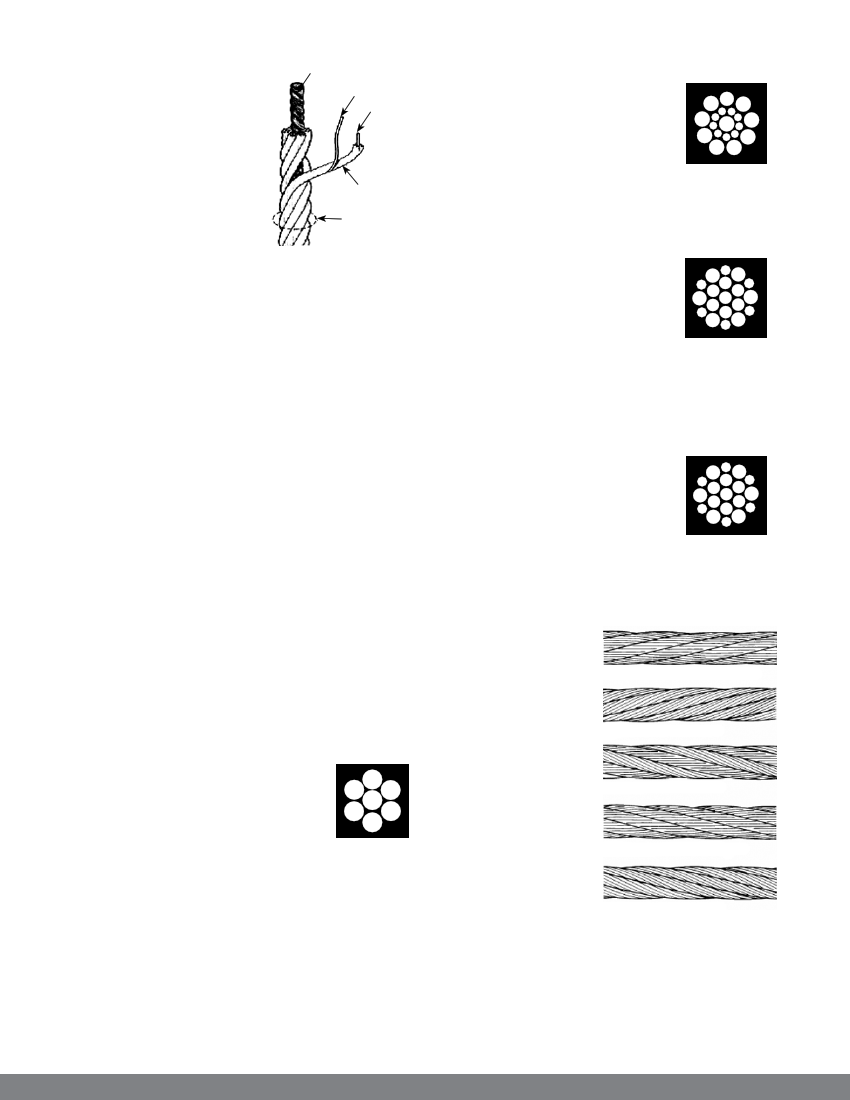
GRAVITY GOODS ROPEWAY
core
on a wire-centre rod.
They are normally
wire
center wire
drawn from bigger
diameter steel rods
in such a way that the
rods pass through a
series of dyes which
progressively reduces
strand
wire rope
their diameters to
form wires. They
are usually made up of high steel carbon.
9. Core: The core of a wire rope is made up of
either textile fibres or steel wires. It provides
an elastic bed preventing internal friction and
sliding of strands twisting around it.
10. Strand: A strand is produced by twisting a
bundle of wire in a particular configuration
and direction. The number of wires and the
number of layers in a strand depend on the
usage frequency of the rope. The centre wire
of a strand is known as “King wire”.
11. Strand constructions: Strands are designed
with various combinations of wires and wire
sizes to produce the desired resistance to
fatigue and abrasion. Generally, a small
number of large wires will be more abrasion
resistant and less fatigue resistant than a
large number of small wires. Various types of
wire-strands are elaborated below:
11.1 Single size: This basic
strand construction has
wires of the same size
winded around a centre
as shown in the diagram
at the right.
11.2 Seale: This consists of a number of
larger outer wires with the same number
of smaller inner wires winded around
a core wire. This provides excellent
abrasion resistance but less fatigue
resistance. When used
with an Independent
Wire Rope Core (IWRC),
it offers excellent
crush resistance over
drums. The Seale type
rope construction with IWRC core is
commonly used for gravity ropeways.
11.3 Filler wire: This consists
of a combination of two
layers of the same wires
winded around the core
wire. Small wires are
used to fill spaces between the larger
wires to produce crush resistance with
a good balance of strength, flexibility
and resistance to abrasion.
11.4 Warrington: As in the
diagram shown at right,
the outer layer of large
and small wires placed
alternately provides
good flexibility and
strength but low abrasion and crush
resistance.
12. Lays : “Lays”
of a wire rope
is simply a
Left lay regular lay
description of
direction as how
the wires and
Left lay lang lay
strands are placed
or laid during
manufacturing.
Right Alternate Lay
Right lay means
the strands laid
from left to the
Right lay regular lay
right across the
rope. Left lay
means just the
Right lay lang lay
opposite - strands
laid from right to the left. Regular lay and
Lang’s lay differentiate the way the wires are
laid within each strand.
132